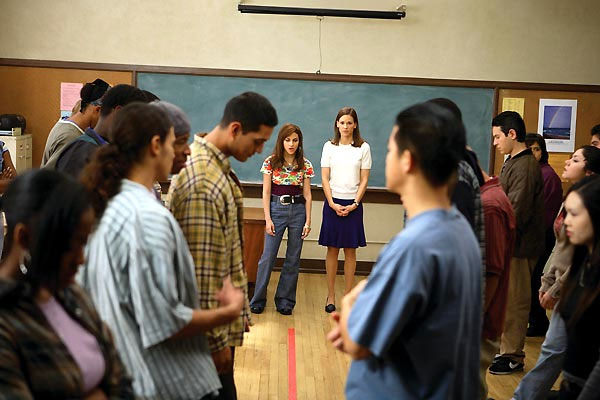 This week in my placement school I had the opportunity to
observe a group four class (primary four), it was an interesting experience
because I have seen the youngest class in the school, have been working with
one of the older classes and now have looked at the middle class, this gives me
a good range of comparisons for the education throughout the whole school.
This week in my placement school I had the opportunity to
observe a group four class (primary four), it was an interesting experience
because I have seen the youngest class in the school, have been working with
one of the older classes and now have looked at the middle class, this gives me
a good range of comparisons for the education throughout the whole school.
The experience highlighted to me the importance of the
role of the teacher and how his/her methods can really shape the way the class
responds and interacts with one another. My mentor on practice in the Dutch
school has shown me that having a good relationship with the pupils really
affects the behaviour in the room.
The primary four teacher used the tone of her voice to
command attention, she raised the pitch and tone of her voice to make what she
was saying more interesting, she showed great enthusiasm for what the children
were saying and then that in turn kept them engaged in the lesson.
In the Netherlands they also have a lot more freedom in
what they teach and organise in the classroom. The group four children had the opportunity
to watch the news or sports on the smart board and break time while they were eating.
In P.E they were engaging in a gymnastics lesson, this was a continuation from
the week before where they had been learning to balance with a partner. There were
three stations set up for them to work through and one included a small
trampoline and a crash mat, the other involved the children balancing on each other’s
knees, backs and shoulders to create different symmetrical shapes. Needless to
say I was very shocked and intrigued by this as at home this would be a
nightmare to do due to the health and safety issues. The Northern Ireland curriculum (2007) states
that within gymnastics at key stage one children should learn to explore a range of movement skills, including
travelling, jumping and landing, rolling, climbing, transferring weight and balancing. The
children in the class were definitely achieving all of these but it made me
wonder if I would be confident enough to use a trampoline with children back at
home during a P.E lesson, therefore I was very impressed with the teacher and
how the class was managed.
 In our own classes this week we worked on the topic of teaching children
how to deal with diversity, we looked at many techniques in which to do this,
however the one that stood out the most for me was the line game, we watched a
clip of the film 'Freedom writers', which is based on a true story, and watched
how the line game works. We then did the game for ourselves, asking various
questions, if they applied to us we stepped up to the line, if they did not we
stood away from it.
In our own classes this week we worked on the topic of teaching children
how to deal with diversity, we looked at many techniques in which to do this,
however the one that stood out the most for me was the line game, we watched a
clip of the film 'Freedom writers', which is based on a true story, and watched
how the line game works. We then did the game for ourselves, asking various
questions, if they applied to us we stepped up to the line, if they did not we
stood away from it.
We discussed how to use this technique at home and why it works, I find
it works because everyone can see each other and can feel a sense of community
with those who they are standing on the line with, they can see that although
other people are from different places to them and have different backgrounds,
they can go through the same emotions and experiences as each other. I find it
would be a brilliant activity to bring back home it could be used as an
ice-breaker and also as a way to ease tension and probe discussion into heavy
topics, especially in a PDMU lesson as the PDMU framework states that children
should develop an awareness of the experiences, lives and cultures of people in
the wider world and in their own community. Northern Ireland curriculum (2007)
CCEA (2007) Northern Ireland Curriculum, Belfast, CCEA.
CCEA (2007) Northern Ireland Curriculum, Belfast, CCEA.

No comments:
Post a Comment